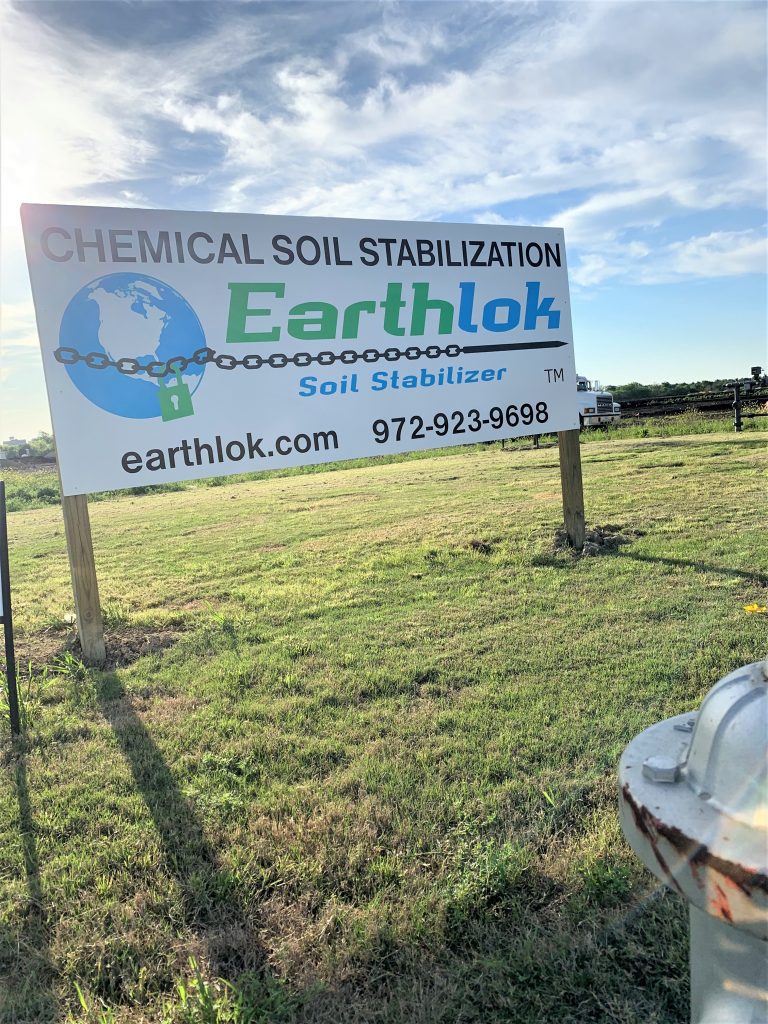Innovative Soil Stabilization Engineering

At Earthlok, we use innovative soil stabilization engineering processes and techniques to provide an environmentally friendly solution to soil expansion. Our engineers utilize the most advanced technologies and methods in the industry. Let’s dive into a few here.
Latest Technologies and Methods
First and foremost, know that Earthlok Soil Stabilizer utilizes an eco-friendly chemical injection method to stabilize soil in the surrounding area.
Earthlok is primarily a dilute Sulfuric Acid reagent that reacts with metals in the mineral compounds of the soil via a single displacement reaction, producing salts (metal sulfates) and hydrogen ions by attacking reactive metals, such as iron, aluminum, zinc, manganese, magnesium and nickel, on the molecular level, creating an exothermic reaction. This reaction breaks up the mineral compounds and satisfies the unbalanced electrical charges that attract water to cause the swelling and contraction in untreated active clay soils. The Hydrogen ions enter the gaseous phase of the soil or attach to negatively charged anions and OH molecules that may shed off like water.
Earthlok Soil Stabilizer is used in the soil stabilizing industry on a regular basis. We have injected Earthlok on many sites within the state of Texas and have witnessed dramatic results in the stabilization of the expansive clay. The process of clay stabilization with acid was developed and then initially studied in the 1950s and early ’60s but has been refined through the addition of proprietary additives and by developing improvements in the testing, equipment, and installation techniques.
SOIL
Soils may be classified into two main groups: mineral or organic and mineral soils contain less than 20% organic carbon. Soil is further identified by particle size, with clay being the tiniest particle size of 0.0002 cm and smaller, while silts are 0.005 – 0.002 cm, sands 0.20 – 0.005 cm, and gravels are larger. Gravel, sand and silt are formed by weathering and erosion breaking down parent materials into smaller and smaller pieces (lithogenic origin). However; clay is formed by erosion and breaking down of parent materials releasing ions into a soil liquid phase that precipitates into new minerals (pedogenic origin). Clay particles have a very large surface area to mass ratio when compared to other soils such as silt or sand. As this “Specific Surface Area” increases the atomic structure becomes more and more exposed which results in broken and unsatisfied atomic bonds, so electrical charges appear on the particle surfaces. This difference in origin, relative size to weight, and presence of electrical charge has a profound impact on the physical behavior of clay as a reactive non-isoelectric colloid particle versus the larger faction of materials.
Water Molecules
The water molecule, H2O, has net charge of zero, but a permanent electrical dipole moment due to the arrangement of two positively charged hydrogen atoms non-symmetrically connected by covalent bond to a single oxygen atom. Also, water molecules form up to four intermolecular hydrogen bonds with other water molecules which results high surface tension and capillary forces as compared to other liquids.
Clay & Water Reaction
The negatively charged clay particles attract the positive dipole of the water molecule which may expand the 2:1 clay lattice structure substantially. As a result, with seasonal moisture change in wet weather conditions the volume of active clay soils increases, and in dry conditions the volume of active clay soils decrease. Earthlok™ is particularly adept at reducing the expansion / shrinkage tendency of soils with 2:1 type clay content.
How It Works
Earthlok is primarily a dilute Sulfuric Acid reagent that reacts with metals in the mineral compounds of the soil via a single displacement reaction, producing salts (metal sulfates) and hydrogen ions by attacking reactive metals such as iron, aluminum, zinc, manganese, magnesium


